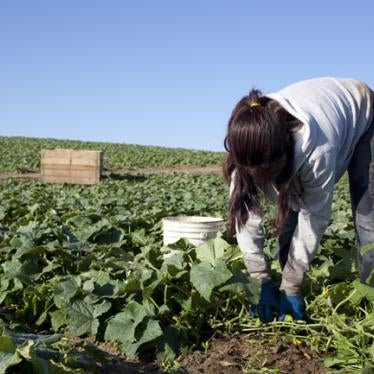By Jo Becker, Children's Rights Advocacy Director for Human Rights Watch
Published in Christian Science Monitor
"There are some things we cannot and will not tolerate," President Clinton declared June 16 in Geneva, as he pledged US support for a new international convention banning the worst forms of child labor.
The convention adopted the next day by the International Labor Organization is intended to ban the most exploitative and hazardous forms of child labor, including child prostitution, slave-like practices, and work that "jeopardizes the health, safety, or morals of children." It's very important that the US back this agreement. But apparently, there is one form of child labor the US is prepared to tolerate: the use of children as soldiers. Child soldiers also engage in work that jeopardizes their health, safety, and morals. An estimated 300,000 children under18 currently participate in armed conflicts around the world, sustaining far higher casualty rates than their adult counterparts and often suffering serious psychological damage.
Studies show that children at greatest risk of military recruitment during times of conflict are frequently drawn into other forms of child labor during peacetime. These at-risk groups include children who are poor, who have no access to education, are separated from their families, displaced from their homes, or come from marginalized groups.
Recognizing the use of child soldiers as a child labor issue, trade unions and many governments sought a broad prohibition on the use of child soldiers in the new International Labor Organization convention. However, the provision quickly became the most controversial item of the two-week negotiating session, as the US launched an aggressive campaign to block a total ban.
The US is one of a minority of countries that still recruits minors into its armed forces. In 1997 there were 2,880 17-year-olds on active duty - minors the US could have sent into combat. A total ban on the use of children in armed conflict would put the US in violation of the new convention, because international law defines a child as anyone under 18.
To get out of this conundrum, the US pushed - successfully - for a much narrower prohibition on "forced or compulsory recruitment of children for use in armed conflicts."
So, thousands of child soldiers around the world - many much younger than 17 - are left at risk, largely lured into armed groups by promises of payment, food, or protection. "Voluntary" recruits are not covered by the new convention. But what difference does it make how they were recruited? The extreme hazards they face remain the same.
The US has clearly opted to sacrifice strong international protections for children in order to protect its own military recruitment policies. Were the US really serious about ending the use of child soldiers, it would be willing to bar the few 17-year-old soldiers in its forces from combat duty in order to achieve a strong international ban.
The new ILO convention isn't the only arena where the US opposes strong standards to end the use of child soldiers. A proposed human rights treaty raising the minimum age for participation in armed conflict from 15 to 18 has stalled for five years in the UN largely because of US opposition. In Geneva, Mr. Clinton spoke movingly of the many children who work in conditions that "shock the conscience" and called on every nation to take responsibility to end abusive forms of child labor. For these exhortations to be credible, the US must reexamine its own policies and its own conscience.








